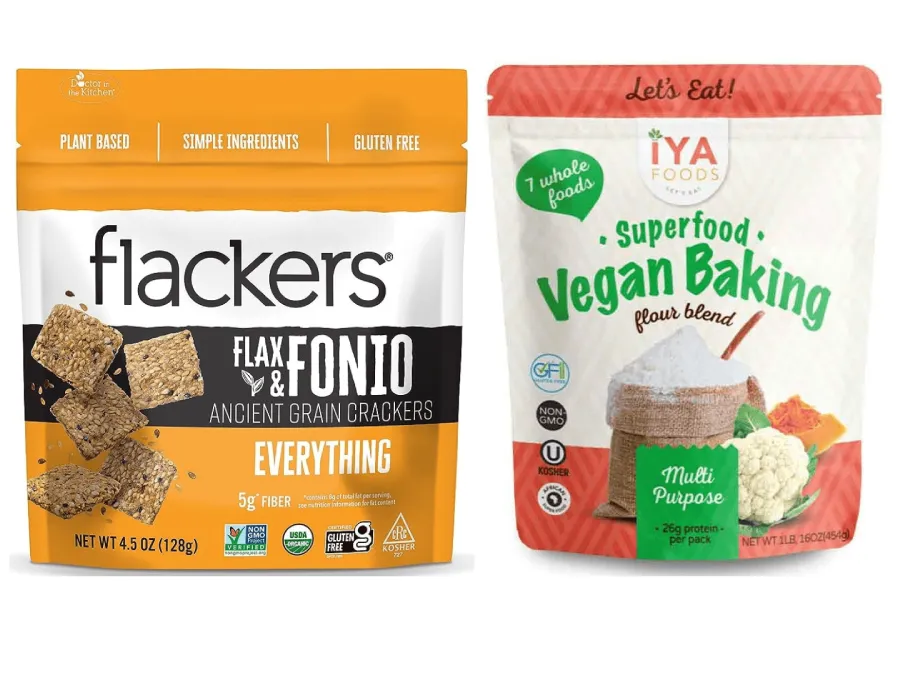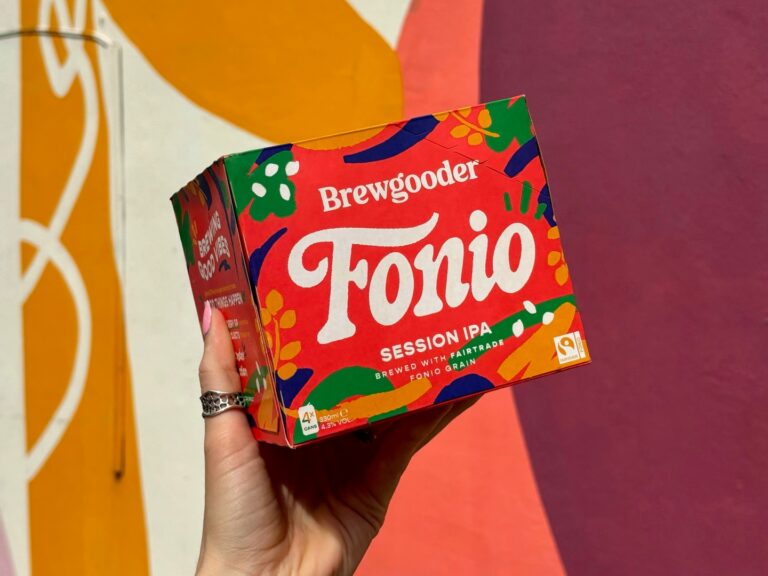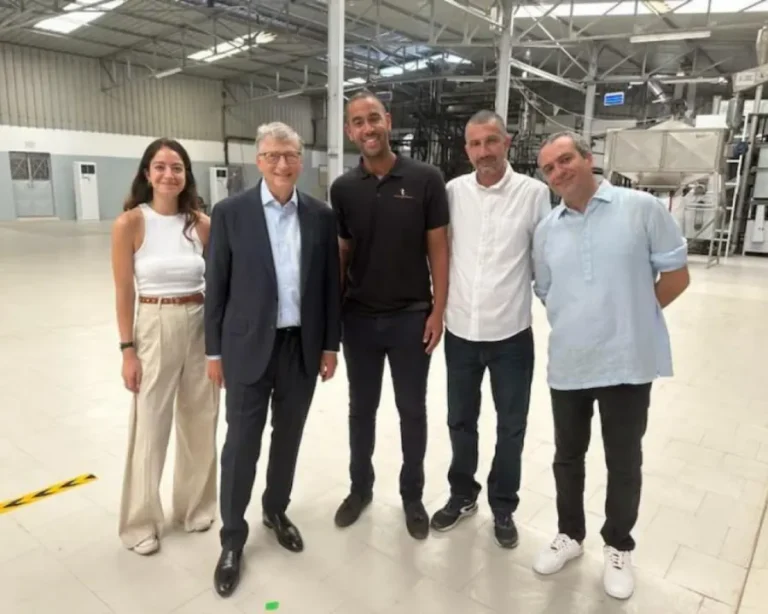
As the world falls deeper into a global food crisis in 2023, with more than 345 million people facing “high levels” of food insecurity according to the WFP, there is a growing opportunity—and an increasing need—for large food brands and manufacturers to offer solutions to this extensive problem. The FAO also estimates that roughly 735 million people worldwide (9.2% of the global population) faced undernourishment in 2022, with up to 30% of the global population (2.4 billion) facing moderate to severe food-insecurity, which are staggering numbers for our current times.
There is no one-size-fits-all solution to global food insecurity, but we believe that the biggest contributions of change will likely have to come from the largest stakeholders in the international food industry: corporations. This includes food brands, manufacturers and suppliers. Two of the biggest areas where large food enterprises can adapt to the changing landscape are by 1) conducting & supporting sustainable agricultural practices and 2) reducing waste, which accounts for roughly 1.3 billion tons of wasted food per year and could feed nearly two billion people. Reducing the amount of food that is spoiled or lost prior to consumption by even 50% would be sufficient to feed almost all of the undernourished people in the world.
Here at Terra Ingredients, we have been working on a solution that focuses both on sustainable agricultural practices and reducing wasted food, while also directly impacting local communities in West Africa that face some of the highest food-insecurity in the world. This solution revolves around the latest super grain you likely haven’t heard of: fonio. Fonio is not new to West African communities, but it is new to most of the outside world and it offers a potentially timely solution to local and global food insecurity. This is due to many factors, but most importantly, fonio has climate-proof and nutritional features that make it uniquely suited for our current challenges.
Why fonio? Why now?
Improving Supply Chains & Technology

Fonio has been cultivated and consumed throughout West Africa for more than five millenia, but only within the last 5-10 years has it begun to receive international recognition due to its ability to grow in challenging climates and its loaded nutritional value compared to that of white rice and other common grains. During this span, food brands, manufactures, restaurateurs and chefs have also been experimenting with fonio to create new food products and unique menu options, discovering that in addition to its health-profile, fonio is also a highly versatile grain.
Despite all of these positive attributes, you may still be asking, “if fonio is truly a super grain, why is it only getting popular now? What’s the catch?” There are many reasons why fonio has flown under the radar for thousands of years and rarely found its way out of rural West African villages, but the key challenges holding it back are:
- Fonio is traditionally very difficult to harvest and process, which is largely still done by hand under backbreaking conditions.
- Lack of modern processing innovation and equipment for small-scale farmers to increase yields and reduce waste has limited the profitability from harvesting the grain.
- Fonio is mostly grown in food-insecure regions of West Africa, with most of the grain being consumed by the communities that cultivate it.
- Fonio is four times as expensive as white rice, which is largely fueled by the difficulty of processing and too many “middle-men” being involved in existing supply chains.
- Poor road quality between villages and metropolitan areas within West Africa have made even domestic scalability virtually impossible up until recently. Thus, getting fonio to ports for international trade has been even more challenging.
On the surface, fonio would not appear to be the type of grain that could play any sort of significant role in the international food industry or reducing global hunger. However, once we began to better understand the historical challenges within the regions where it is grown—economically, politically and technologically, we found that with the right partnerships, equipment and efficient supply chains, fonio undoubtedly has the potential to impact both the local and global food supply in the coming years.

As an example of this, we have already formed partnerships with small-scale farmers, villages, businesses and government agencies (such as the Chamber of Commerce and Agriculture in Sedhiou) in Senegal, Mali and neighboring countries in West Africa—in addition to building a modern processing facility in Dakar, Senegal with our local partners at CAA—that have together begun to unclog the process from harvest to consumption of fonio. Farmers are already increasing the profits from their yields, which benefits their families and their communities, and we are the first and currently only supplier able to process and offer fonio at large volume both within Africa and internationally.
Food companies like our brand partners at Iya Foods are already offering fonio products to consumers throughout the U.S. and Europe, while whole foods stores in both of these international markets are stocking pearled fonio, fonio pilaf & fonio flour on their shelves. European countries imported a combined 451 tons (valued at €355,400) of fonio in 2021, and the U.S. became the top importer of fonio in 2020 with an estimated $377,000 worth of imported grain. The European fonio market has grown steadily in recent years, with fonio imports into the EU increasing from 172 tonnes to 451 between 2016 to 2021. Also, the West African country of Togo is creating a plan to double its fonio production from 5,000 to 10,000 metric tons per year by 2028, which would be significant for both domestic and international markets.f

As fonio production and exports grow, more and more fonio recipes are popping up on the internet, restaurants in metropolitan cities are beginning to offer fonio-based cuisines, and research continues on other ways to use fonio as a substitute for less nutritious grains. In the U.S., fonio products are now found in many popular stores across the country, including Target, Whole Foods and Walmart, with a plethora of products also available for purchase on Amazon and smaller brand websites that are selling their products directly to consumers. Additionally, and maybe most importantly, metropolitan cities & regions in West Africa are also catching on to the trend.
One example where fonio is making a domestic impact is in Dakar, Senegal. Many people who grew up in Dakar historically did not even know about fonio since the grain is primarily cultivated and consumed in more rural parts of the country, rarely finding its way into metropolitan restaurants or cuisines. Now, however, fonio is making its way into high-end hotel & restaurant menus throughout Dakar where local cuisines are featured. As much as global demand and exports are important to the growth of the fonio industry, local awareness, demand and consumption will be critical as well—especially as these regions begin to invest more into infrastructure, land and technology to increase fonio outputs. Also, getting fonio from farm to fork in Dakar, Senegal is much more efficient and cost effective than to New York City.

Changing Climates & Food Insecurity
As droughts around the globe are becoming more frequent, longer and more severe, typical growing seasons and rainfall are becoming less and less predictable, despite the world gradually becoming “wetter” as temperatures rise. This unpredictability paired with longer stretches without rainfall will further strain the resources required to produce crops that require consistent water and other nutrients, and this will have the biggest impact on regions that already struggle with food insecurity. The IPCC (Intergovernmental Panel on Climate Change) projects that West Africa, and specifically parts of the Sahel region where fonio is cultivated, will face some of the strongest drying in all of Africa.
However, these changing environmental factors open the door to new and necessary solutions, which is where fonio comes in. Since fonio is a native crop and well-adapted to the Sahel region’s already challenging climate, unlike imported cash crops like rice and wheat, it is uniquely positioned to not only survive continued climate change, but potentially thrive with the right approach. Fonio is very easy to plant and maintain, requiring only limited manual effort and rainfall in order to achieve maturation in a lightning fast 60-70 days in some cases. This allows even small-scale farmers to generate profits from their harvest, which is becoming more rare in the modern day.
The primary challenge with fonio, which we highlighted above, is that it is difficult to process due to the small size of the grain. However, we are already making progress in this area by having a modern processing facility in Dakar, Senegal (owned and operated by our family-owned strategic partner, CAA) and giving farmers more access to the technology & equipment, such as threshers, that they need. Unlike other major cash crops, most of the automated equipment needed to improve fonio processing efficiency simply does not exist yet, but once this technology is built, we believe that fonio production will be able to scale significantly and further benefit farmers and their communities throughout West Africa.

Also, with modern processing equipment, we will be able to reduce the amount of fonio grain that is lost from traditional manual processing methods. Due to the grain’s small size, removing the grain from the inedible outer husk is very difficult and traditionally done by hand, which is a highly inefficient and physically demanding process. Then, following dehusking, the cleaning process needs to be extremely gentle so as to not damage the grain. Between these two steps there is a significant amount of lost harvest. Our processing plant in Dakar is already tackling this phase of fonio processing and having a positive impact on reducing waste, but there is still a lot of work to be done before the grain gets to our plant, as well as continuing to advance the current processing equipment.
A Super Versatile Super Grain
Fonio as a Flour Substitute
Fonio’s potential as a flour substitute is what gives the grain its most mainstream appeal, elevating it beyond being a simple substitute for rice-based cuisines for health-conscious consumers and those with gluten sensitivities. Fonio can be used as a nutritious flour substitute in pancakes, bread, porridge, muffins, waffles and any number of baked goods, which adds to its international marketability. Consumers can already purchase fonio flour in small quantities from a handful of brands throughout the U.S. and Europe, both online and in whole food supermarkets.

Additionally, food brands and manufacturers are experimenting with fonio flour to create new products such as chips, crackers, muffin mix and gluten-free baking flours. For example, Iya Foods has paired fonio flour with 6 other nutrient rich flours to create a superfood Vegan Baking Flour Blend. In 2023, they also launched a new product line called Chipers™ that uses a blend of nutrient-dense ingredients, including fonio flour, to create a cross between a chip and a cracker. Iya Foods and other brands are already showing how versatile this flour alternative is and we anticipate more fonio flour-based products to hit shelves in the near future.
To learn more about fonio flour, check out our recent article: “Fonio’s Potential as a Flour Substitute”.
Fonio’s Nutritional Advantage
One of fonio’s biggest appeals for the modern consumer is its nutritional value relative to other more commonly consumed grains and flours. Pearled fonio (dehusked & parboiled), which is currently the most common form that consumers will find on the market, contains 2-3 times as much fiber as white rice, is packed with a diverse range of essential amino acids that are missing in most of today’s major cereals, and is a great source of vitamins & minerals such as iron, thiamine, zinc, magnesium and others. Fonio is also gluten-free, broadening its appeal to a larger global audience. Together, all of these qualities make fonio a great alternative in rice-based cuisines, as a side dish, baked goods and other flour-based recipes such as these fluffy fonio pancakes.
To learn more about fonio’s full nutritional breakdown, check out our article: “A Deep Dive Into Fonio’s Nutritional Benefits”
Adaptable Flavor Profile & Quick Cook-Time
Fonio has a mild, nutty flavor profile that allows it to be substituted for essentially any grain, regardless of what cuisine you are preparing, and cooks in only 5 minutes. Thus, not only does fonio fit modern eating habits in a fast-paced world, but it does so without sacrificing nutrition or flavor. This makes fonio a potential swiss army knife for food brands looking to offer new, healthy, easy-to-prepare and flavorful products that the current generation of consumers demands, while also having a positive impact on the communities where it is grown—as we highlighted previously.

How Can Your Food Brand Leverage Fonio?
We’ve already provided some examples of how food brands and manufacturers have been experimenting with fonio, but below we’ve compiled a comprehensive list of how it is already being used in order to give you some ideas. We hope this list inspires continued innovation and the creation of more fonio products for global consumers to add the grain to their diets.
Packaged goods:
- 1-5 lb bags of fonio flour
- Chips & crackers
- Bread and muffin mixes
- Flavored fonio pilafs
- Vegan & gluten-free baking flour blend
- Fonio pasta
Recipes:
- Fonio bowls, paired with proteins, veggies legumes
- Porridges and cereals
- Pancakes
- Couscous
- Curried fonio
- Brownies
- Jollof (West African dish)
- Fonio balls in peanut sauce
- Beef & fonio meatballs
- Fonio crumble
- Salads
- Fonio sliders/burgers
- Fonio upma
- Pound cake

As you can see, there is a significant opportunity for food brands to harness the potential of fonio to develop innovative food products that not only cater to consumer preferences but also contribute to addressing global food insecurity. Fonio’s exceptional nutritional profile, rich in essential amino acids, minerals, and vitamins, positions it as a valuable ingredient in creating healthier and more sustainable food options. Brands can incorporate fonio into various products like breakfast cereals, gluten-free pasta, snacks, and baked goods, offering consumers diverse and nutritious choices. Fonio’s versatility allows for its integration into both traditional and modern cuisines, making it appealing to a wide range of consumers.
Furthermore, the cultivation of fonio can have a significant positive impact on global food insecurity. Fonio is a resilient crop that thrives in challenging conditions, making it suitable for regions facing climate variability. Its quick growth cycle and minimal resource requirements make it an accessible option for small-scale farmers in developing countries, enhancing food security at the local level. By promoting the production and consumption of fonio-based products, food brands can create market opportunities for these farmers, stimulate economic growth, and contribute to long-term food security efforts on a global scale. In this way, fonio not only nourishes consumers but also supports sustainable agricultural practices and the fight against food insecurity.





